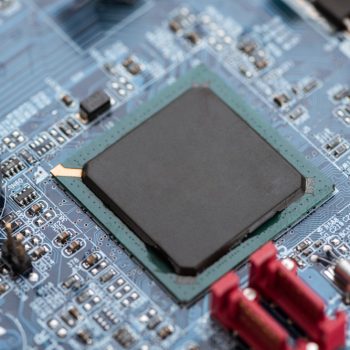
Pitching is a skill that all startups must master. The success of a startup is highly dependent on the pitching and storytelling ability of its founders. Being able to explain your product and company with a good presentation pitch is a critical aspect of fund raising for startups. While pitching is required for all types of startups, it is an absolute must for hardware and IoT startup founders. Hardware and IoT startups can be more difficult than software startups since they need more resources, time, and effort, therefore pitching plays a more crucial role.
Hardware and IoT startups may get fewer opportunities to pitch a deck as compared to software startups that have more events geared for them. Founders and entrepreneurs may need to pitch their product not just in front of VCs, investors, and banks, but also to their prospective clients and team members, co-founders, and even to their friends and family. For hardware and IoT startups, where products can be more complicated and industry or niche specific, founders need to master the art of pitching so they are able to convey their products in a way that is easily understood.
StartupBlink hosts a monthly Hardware Startup Pitching online event to provide a platform for you to pitch your hardware and IoT startup, get advice from world-class hardware experts and the opportunity to be featured on our top-rated blog, newsletter and social media channels. This event is provided in partnership with the ANSYS Startup Program. ANSYS is the leading provider of engineering simulation software and offers eligible startups access to a suite of engineering simulation tools at a heavily discounted price through their Startup Program. Register for our pitching event here, and selected hardware startups will get a chance to pitch in front of a global audience.
In this article, we will summarize how to pitch your hardware and IoT startup and offer a few pointers on creating an ideal pitch.
Mastering the art of Pitching your Hardware and IoT Startup
Hardware and IoT startup pitching may seem like rocket science but it’s fairly simple. Follow the steps mentioned below to become a master presenter.
Practice pitching regularly. Join pitching events: Practice, practice, and more practice. As a founder, you must constantly be on the lookout for hardware and IoT pitching events so that you get more opportunities to participate and practice. This helps to improve your pitching skills, provide proof of concept, and gather instant feedback from the audience.
Pitching in a wide range of events helps increase your chances of getting an investor, in addition to the opportunity to potentially win a pitching contest and gain possible monetary benefits. It can also get you more media exposure and free publicity that will attract prospective clients. As a hardware and IoT startup founder, every bit of exposure for your product counts. Spreading the word about your startup in the industry can help boost your startup immediately. And if your hardware project is at an early stage, sharing your idea may help you find co-founders and mentors apart from investors and clients.
Create a clear concise pitch: Putting together a pitch that is easily understood by your audience is the the key to success. Most hardware and IoT startup founders fail to highlight the problem and the solution they are providing. Since hardware products can at times be technical and complicated, creating a simple problem statement and explaining your product as a solution can help. If there are similar products in the market offering the same solution, highlighting your competitive advantage is important.
Here are some questions to think about when creating a pitch:
- Is it clear to people without an engineering background? Is the product and potential understood? – Make sure the problem statement is in simple words that are easily understood by everyone.
- Is the pitch balancing all your points? – Cover all critical aspects and don’t focus only on technical points. The best pitches that we have seen during our hardware pitching events have not just focussed on technicalities.
- What problem are you solving? – Your unique solution. This is the key to your pitch and your central idea. Try to present your solution as clearly as possible and show how your product resolves the problem.
- Why are you special? – Any competitive advantages like price, ease of use, design, etc.
- Who are your competitors?
- Were any milestones achieved? – List your successes and major milestones.
- Is there a big market? – Market research and analysis. Investors are attracted to markets that are big with a potential for disruption.
- Who are the founders? What is their background? – Audiences appreciate a story about how the founders arrived at or discovered the need for their product.
- Why are you pitching? What are you looking for? – Discuss whether you are looking for investors and funding, prospective clients, or media exposure.
- Who is your audience? – Understanding who you are presenting to will help you adapt your language and focus on the relevant aspects
- What is your pitching style? – Add some visuals and facts to keep the pitch engaging for the audience.
Projecting your brand: As a founder, you are the brand of your startup. More important than your pitch is how you project yourself and your body language. Furthermore, pausing at the right moments when presenting brings out the impact of your pitch.
Since hardware startups are mostly short on resources and finances, coming out as too desperate for investors may backfire for your presentation. Also, many VCs and investors may actually tell you that your product isn’t innovative but believing in yourself can show your confidence in the success of your product. VCs don’t invest in just businesses but in the founders too, and projecting yourself as enthusiastic and confident about your startup can boost your chances of getting funding.
Keep your numbers handy: Ensure you have all your data and numbers handy, just in case you are asked about it. Be aware of the costs of production, revenue to date, number of clients, market size data, time-to-market, days of production, etc. Not only will this help you in your day-to-day workings, it will also be very useful while pitching in front of investors. Investors love numbers since they directly help them analyse the current situation of your hardware and IoT startup.
Conclusion
It is important to have a well practiced and articulated manner when pitching in any hardware events. Hardware startups are always resource crunched and getting any opportunities for pitching directly translates to more exposure and increased chances of funding. Apart from just focussing on your own pitch, try to understand other hardware products that are pitching during such events. This can help you connect with prospective buyers and suppliers.
Getting prepared for a pitching event can help you pitch well and can improve your storytelling skills, which are important for founders of hardware and IoT startups. Our Hardware Startup Pitching event provides great exposure for you to present in front of a global audience and receive constructive feedback from experts in the industry. Our event is partnered with the ANSYS Startup Program, which offers eligible startups access to a complete bundle of their engineering simulations tools at a heavily discounted price.
